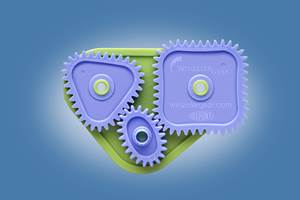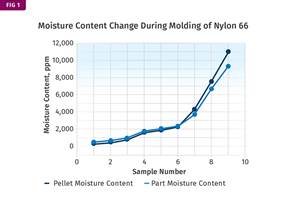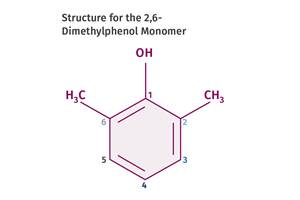Advancing Composites in the Black Hills of SD
The CNAM Center at the South Dakota School of Mines seeks to act as a nucleus for composites manufacturing.
When you think of South Dakota, Mount Rushmore, Sturgis and Deadwood all come to mind. But a group at the South Dakota School of Mines & Technology hopes that one-day South Dakota is also viewed as a national and global hub for advanced composites manufacturing R&D. The Composite and Nanocomposite Advanced Manufacturing (CNAM) Center at the South Dakota School of Mines & Technology in Rapid City was launched in September 2013 with a goal to help maximize the potential for composites manufacturing. Funded through a five-year award from South Dakota Governor’s Office, CNAM includes the participation of a consortium of corporations, which features three processors (Falcon, Brookings, SD, Continental, Auburn Hills, Mich., and Raven, Sioux Falls, SD) as well as PolyOne, Avon Lake, Ohio.
“What is compelling about CNAM is the overall intent to bring composites more into the mainstream for applications like transportation, infrastructure and energy,” Joe Golba, lead scientist, reactive extrusion at PolyOne told Plastics Technology.
The market penetration of composites compared with steel and aluminum is still below potential. CNAM believes this is a combination of both expensive raw materials as well as a high manufacturing cost.
“We need to get the cost down of composites—both the materials and manufacturing cost,” said David Salem, director of CNAM. “We believe that CNAM can make real advancements in this area.”
Why CNAM? Well, Salem says CNAM is an industry-driven center and its overall goal is to see the fruits of CNAM’s research and development go to the market. As the membership covers the entire supply chain, Salem says there is a great deal of collaboration in the center.
CAPE LAB
The School of Mines is home to the Composite and Polymer Engineering (CAPE) Lab, which features almost $10 million of advanced equipment in 10,000 square feet of laboratory space. From a Cincinnati Milacron injection molding machine to a Taricco industrial autoclave for composite curing, the CAPE Lab features plenty of polymer and composite processing and prototyping equipment. In addition to a number of graduate students, CAPE employs full-time, dedicated composites scientists and engineers.
TECHNICAL WORK
One interesting development to come from CNAM includes the development of a new manufacturing process for discontinuous fiber-reinforced thermoplastic sheet (CNAM-DiFTs). Provisional patents related to process and properties were filed on Aug. 11. (To view more about this process, check out PT’s New Process for Fiber-Reinforced Sheet.
CNAM is also working on a practical method to fabricate hybrid multi-scale –composites using in-situ polymerization of CBT, incorporating electrospun glass and carbon nanofibers combined with glass and carbon microfibers. Other work includes a model that has been developed to predict fiber orientation in injection molding processes, which has been demonstrated in case studies. Orientation predictions are being output into software to predict strength and failure based on orientation pattern.
Salem says that the IP developed at the university belongs to university, however, member corporations have exclusive rights to use the technology on licensing terms to be negotiated, and have first right of refusal.
The CNAM Center is interested in expanding its membership to additional corporations. If your organization is interested in participating or would like more information, contact David Salem.
Related Content
Resins & Additives for Sustainability in Vehicles, Electronics, Packaging & Medical
Material suppliers have been stepping up with resins and additives for the ‘circular economy,’ ranging from mechanically or chemically recycled to biobased content.
Read MoreTracing the History of Polymeric Materials: Acetal
The road from discovery in the lab to commercial viability can be long, and this was certainly the case for acetal polymers.
Read MoreWhat's the Allowable Moisture Content in Nylons? It Depends: Part 2
Operating within guidelines from material suppliers can produce levels of polymer degradation. Get around it with better control over either the temperature of the melt or the barrel residence time.
Read MoreTracing the History of Polymeric Materials: Polyphenylene Oxide
Behind the scenes of the discovery of PPO.
Read MoreRead Next
Processor Turns to AI to Help Keep Machines Humming
At captive processor McConkey, a new generation of artificial intelligence models, highlighted by ChatGPT, is helping it wade through the shortage of skilled labor and keep its production lines churning out good parts.
Read MoreLead the Conversation, Change the Conversation
Coverage of single-use plastics can be both misleading and demoralizing. Here are 10 tips for changing the perception of the plastics industry at your company and in your community.
Read MoreWhy (and What) You Need to Dry
Other than polyolefins, almost every other polymer exhibits some level of polarity and therefore can absorb a certain amount of moisture from the atmosphere. Here’s a look at some of these materials, and what needs to be done to dry them.
Read More














.png;maxWidth=300;quality=90)











